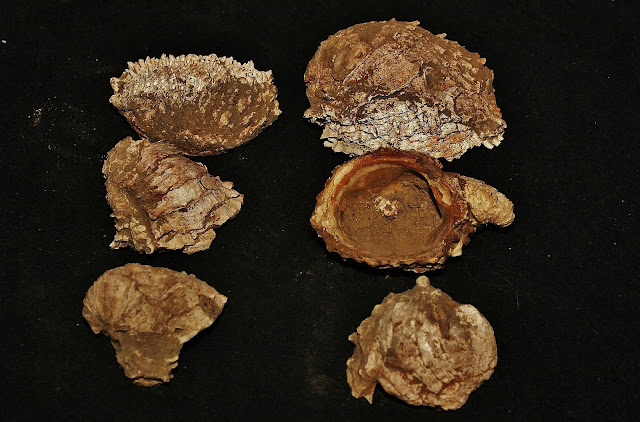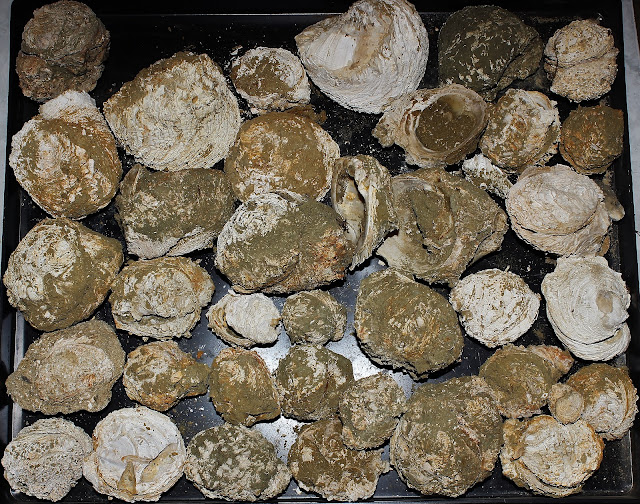Family Cymatiidae.
Cymatium is a genus of small to large predatory sea snails, marine gastropod mollusks in the family Cymatiidae.
This genus has numerous species, perhaps as many as 100, some of which have a worldwide distribution. The genus has been divided into at least 10 subgenera. Some authors have elevated those subgenera, giving them the full status of genera, but this is by no means universally accepted.
Fossil records
This genus is known in the fossil records from the Eocene to the Quaternary (age range: from 55.8 to 0.012 million years ago).
Description
These sea snails have separate sexes. They lay egg capsules. After hatching, the larvae have a planktonic stage that can (in some species) last several months; this is what enables the very widespread distribution seen in certain species, as the planktonic larvae can be carried great distances before settling to the sea floor. From Wikipedia, the free encyclopedia
Photo by George Konstantinou



.JPG)
.JPG)






.jpg)
.JPG)
.JPG)

.JPG)
.JPG)
.JPG)




.JPG)
.JPG)


.JPG)
.JPG)










.JPG)





.JPG)
.JPG)



.jpg)
.jpg)